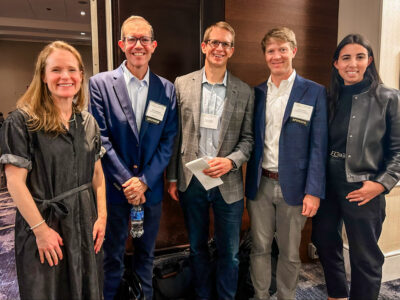At the end of the day, what’s most important to a nonprofit that helps other nonprofits with their tech systems is helping as many causes as broadly as possible.
It was this belief in the maximization of resources, ultimately, that led D.C.-based 501cTech and Philly-based Tech Impact to a merger, finalized at the beginning of July. The merger wasn’t completely out of the blue, though. As sister site Generocity reported here, both organizations were the product of the NPower network, a national network of nonprofits bringing IT support to other nonprofits that was formed in 1999 with funding from Microsoft.
The NPower affiliates for Pennsylvania and the Greater D.C. Region rebranded as Tech Impact and 501cTech, respectively, when the Microsoft funding dried up, both intent on continuing the work.
According to Julie Chapman, CEO of 501cTech and now executive director of Tech Impact in D.C., it was Tech Impact that grew faster. “They have more of a national profile,” she said. By the time of the merger, Chapman estimated that 501cTech had about 70 clients, and Tech Impact had about double that.
Despite the departure from the NPower network, though, both organizations remained friendly. “We’ve always been partners,” Chapman said. This friendly relationship has always been valued, Chapman said, because “in short, we really do the same thing.”
Both 501cTech and Tech Impact, now subsumed under the name Tech Impact, provide outsourced IT services for nonprofits. Clients range widely from five-employee nonprofits to those with over 300 workers, Chapman said. The common denominator is that all need help with things like moving email to the cloud, buying new hardware and ensuring that the tech systems in place work as an asset to the nonprofit’s ultimate mission.
So when Chapman and Tech Impact Executive Director Patrick Callihan began talking seriously about a merger of their two organizations this past December, Chapman saw an opportunity for both to execute their missions better, with more resources.
So 501cTech and Tech Impact set about the process of combining operations, taking care to ensure that all services of each remain available. Chapman reflects that it has been “an interesting exercise,” but that “it’s gone pretty smoothly.” The merger became effective “on or about” July 1.
https://twitter.com/501cTECHDC/status/753734753468223488
Asked what the biggest struggle nonprofits have with technology is, Chapman answered immediately: “limited funds.” She said that sometimes it can be difficult to encourage nonprofits to invest in tech, as this can make organization leaders feel as though they’re not staying true to the mission.
Of course, as we move further and further into a tech-enabled society things like a simple website or social media presence for a nonprofit are no longer optional, but critical, to any mission. This is the lesson Chapman has devoted her time to teaching — now with a bigger team.
Before you go...
Please consider supporting Technical.ly to keep our independent journalism strong. Unlike most business-focused media outlets, we don’t have a paywall. Instead, we count on your personal and organizational support.
Join our growing Slack community
Join 5,000 tech professionals and entrepreneurs in our community Slack today!




